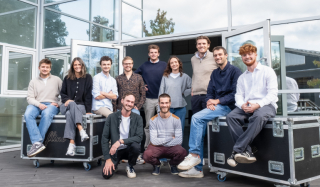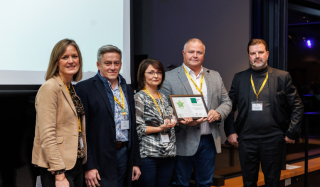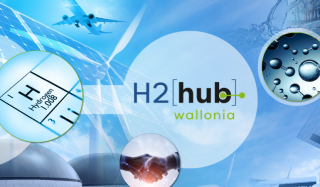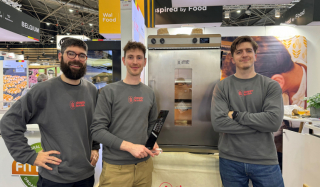
Thanks to an innovative process developed in Gosselies, Wallonia, the flat glass manufacturer AGC will reduce its carbon emissions and use circular materials. An exclusive production line has thus been opened in Dubi, Cezch Republic to launch the Volta project.
For 60 years, the same flat glass production processes have been used. However, the European Union has set targets for reducing CO2 emissions. In this context, AGC, headquartered inLouvain-la-Neuve, had to review its various methods. By 2030, they want to reduce their emissions by 30 %, or 1 millions tonnes. Marc Foguenne, vice-president of sustainable development, was keen to point out to L’Echo that “nobody wants to emit CO2, but if decarbonizing were that simple, we'd have done it long ago”.
The first challenge is to replace as much natural gas as possible with electricity. Previously, AGC used this material to heat the glass mass to 1600 degrees. It has now decided to replace it with at least 50 % of electricity in its production. To reach that, it has bored 80-milimeter-diameter holes at the bottom of the basin, where electrodes heat the glass.
Not only does this new process cut carbon emissions by 75 %, but it also encourages the circularity while improving the energy efficiency of the production. The reuse of glass to make another product was not commonplace for flat glass. Thanks to the Volta project, which recovers and reuses end-of-life glass scraps, the 30 % internal losses are transformed into 80 % circular raw materials.
An achievement made up in Wallonia
AGC’s research center in Gosselies, Wallonia, enables the development of this new innovation. Dozens of people with different technical background began resarch in 2021. Factorys such as operating and consumption costs had to be estimated by digital twins.
With Volta, a whole new process can be put in place. “It's an investment that's being made, to get answers: can we rethink glass production in Europe, with economic and technical viability?”, wondered Marc Foguenne in L’Echo. But big challenges also have to be taken into consideration: cost (over) estimates, technical uncertainty or the legal framework for CO2 taxation.
A 100 % european partnership
Based on the operations schedule, AGC, which already operates some fifteen sites in Europe, has decided to launch its brand-new flat glass production line in Dubi, Czech Republic. General maintenance takes place every 20 years. It was the perfect timing for the Czech site. To counterbalance the high CO2 content of Czech electricity, AGC made sure it had sufficient supplies of green energy.
To realize this project and keep costs down, AGC teamed up with its main competitor, the French Saint-Gobain group. Saint-Gobain and AGC have 50 % share of this market. Together, they will “develop the technique, to reduce investment risk”. Saint-Gobain will have access to the Czech site during the three-year test phase. “We decided that, given what was at stake, it was better to succeed together than alone,” concluded Marc Foguenne in L'Echo. A nice example of responsible collaboration that highlights Walloon innovation.







